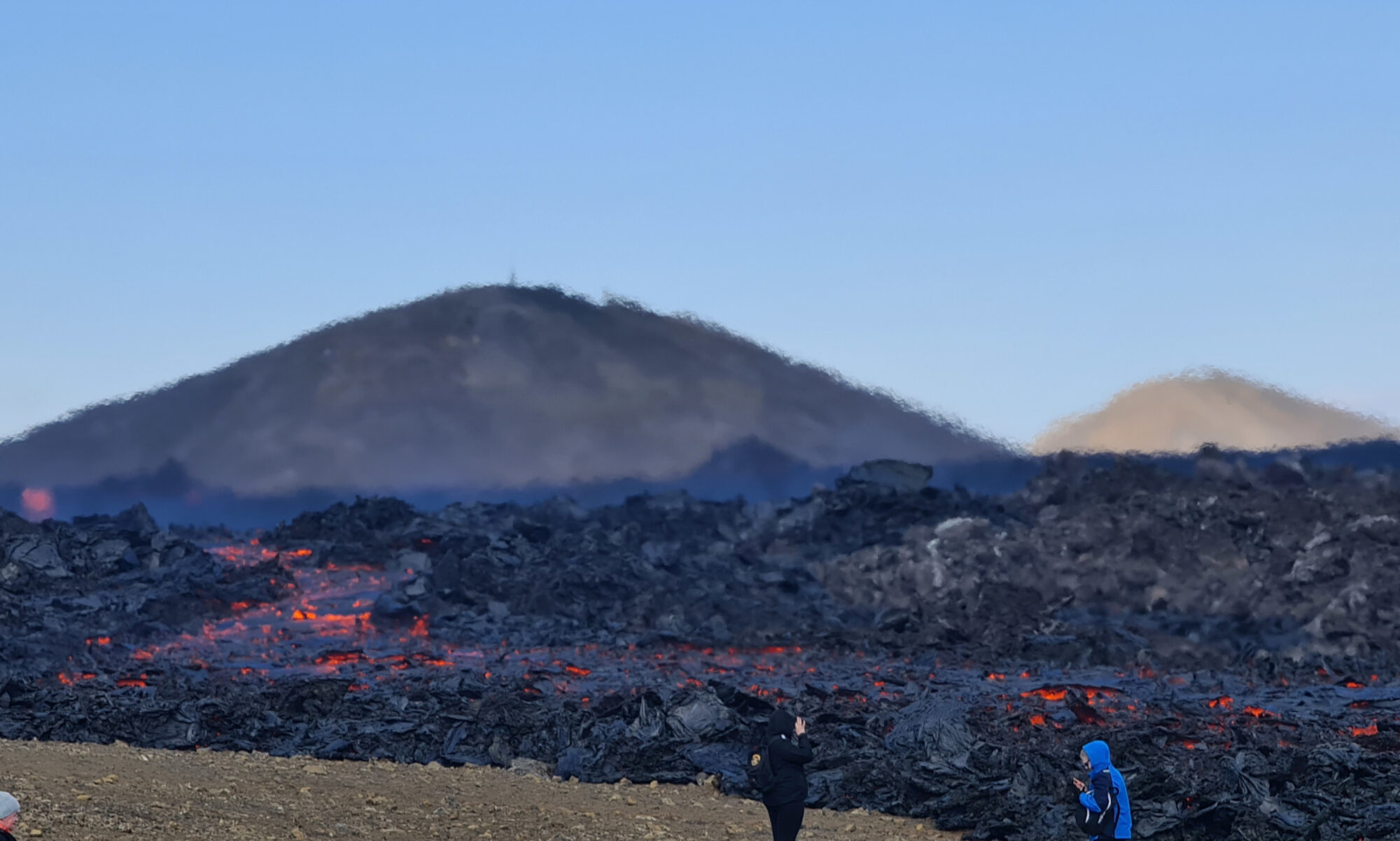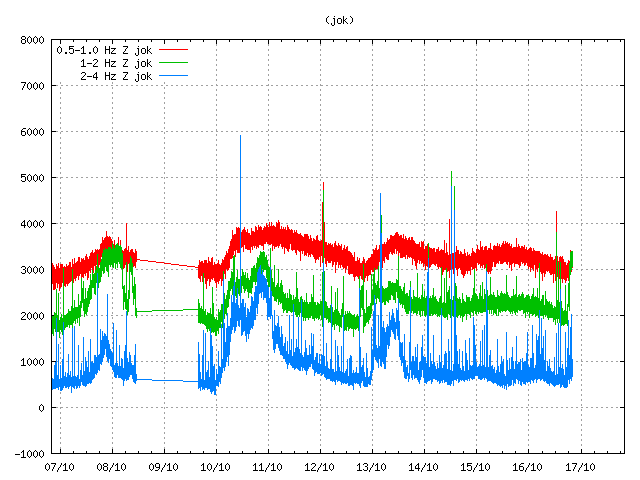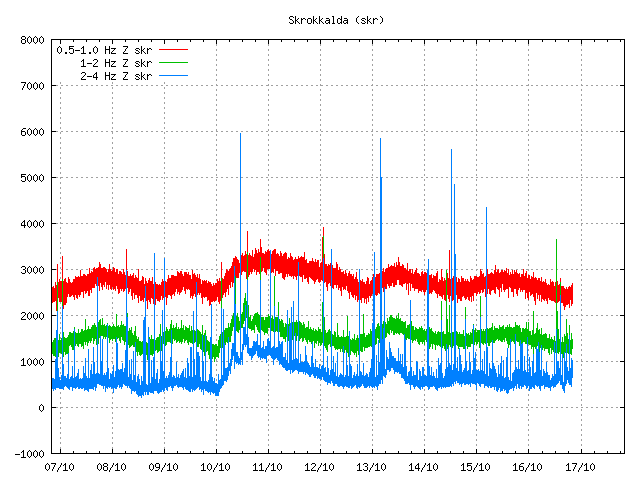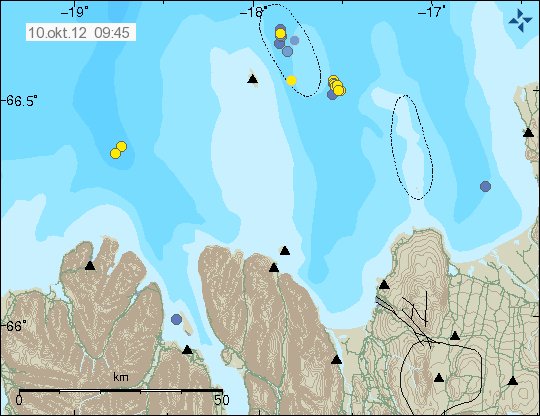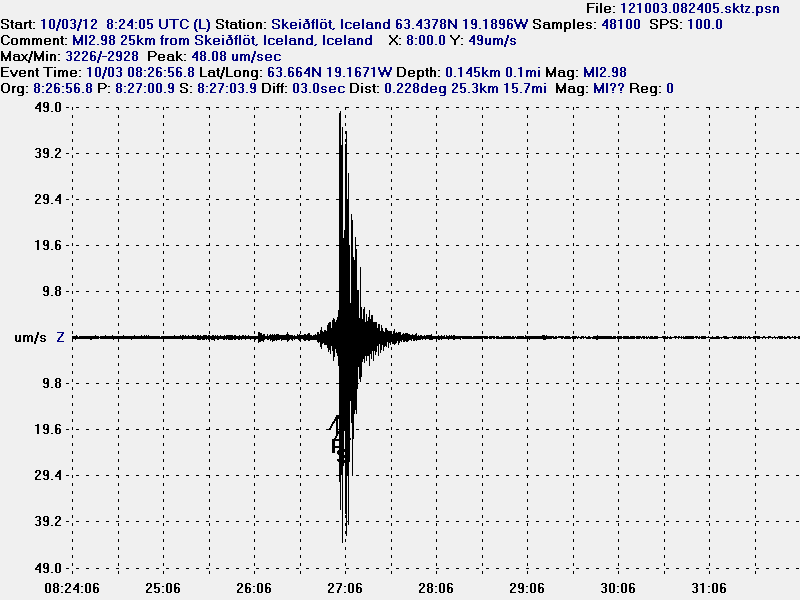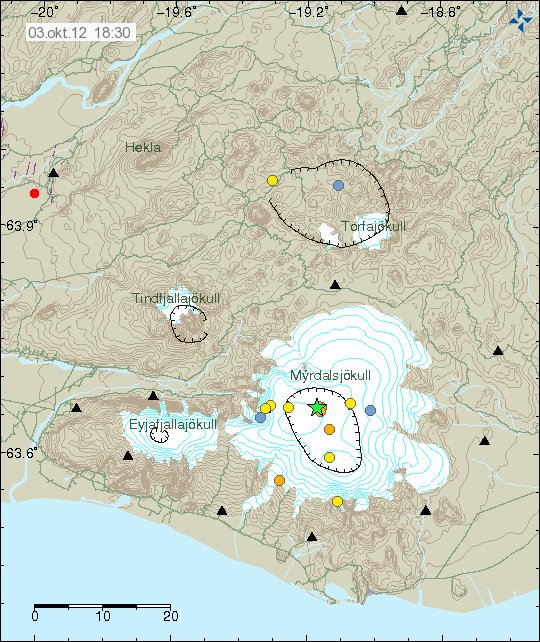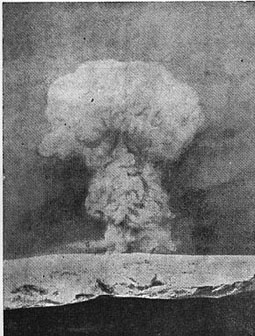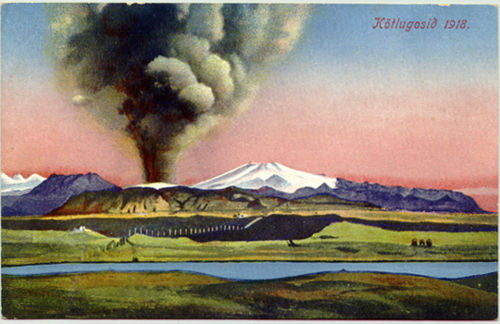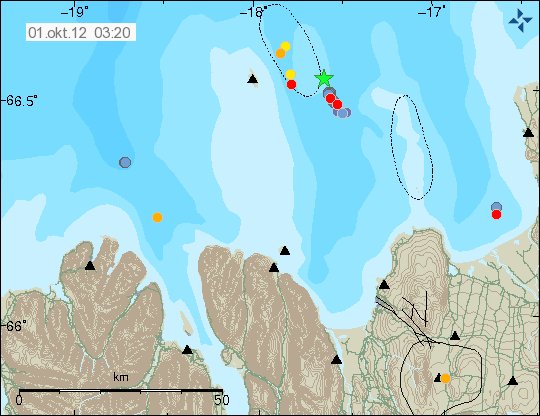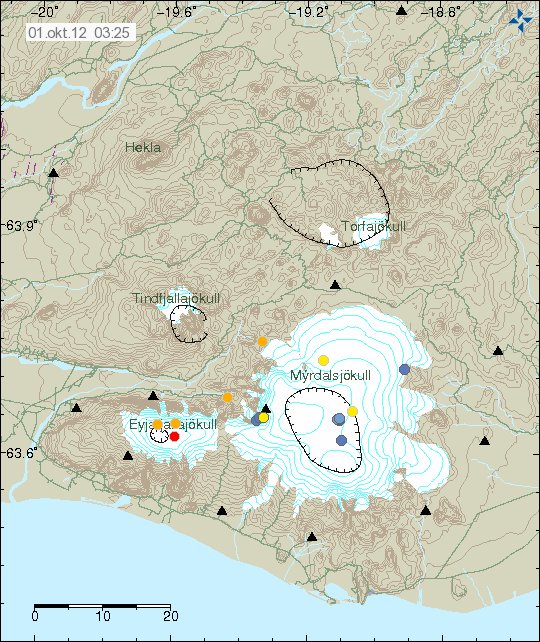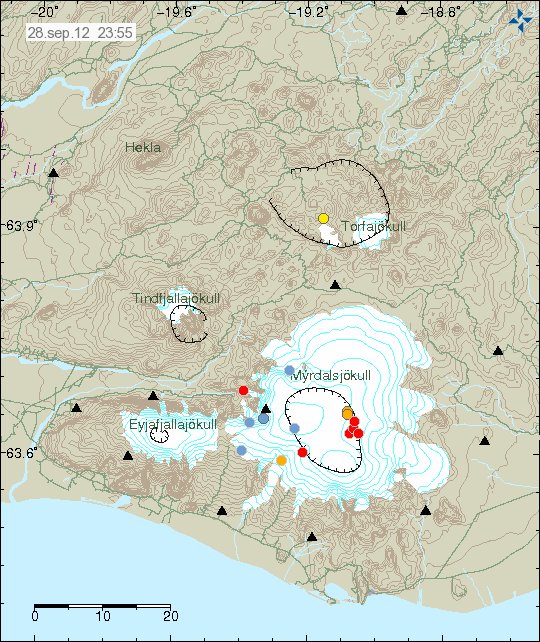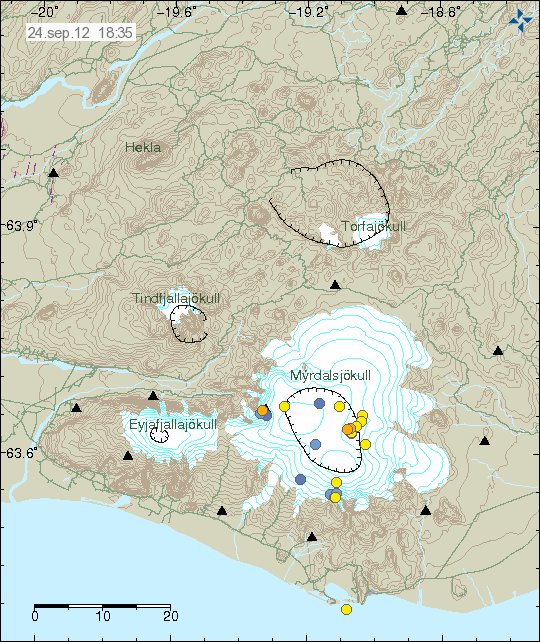Today (20.10.2012) has been busy in terms of earthquake activity in Iceland. So I am expecting to write a second update later today on this activity.
Hekla volcano
At 05:28 UTC there was an earthquake in Hekla volcano. This earthquake had the magnitude of ML1.1 with the depth of 0.6 km. No other earthquakes have followed this single earthquake. What this means is impossible to know at this time. But so far everything remains quiet in Hekla volcano.
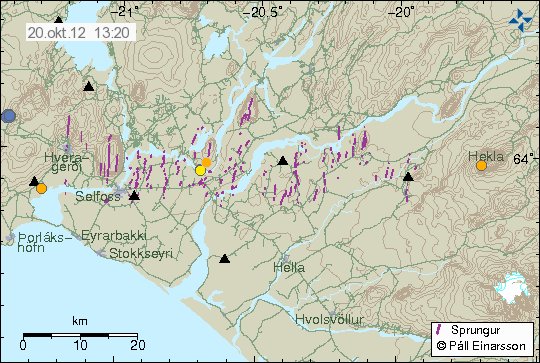
Earthquake in Hekla volcano. Copyright of this image belongs to Icelandic Meteorological Office.
Kverkfjöll volcano
Earthquake activity continues in Kverkfjöll volcano. This earthquake activity is the result of dike intrusion into Kverkfjöll volcano. So far this earthquake activity is taking place in short burst of earthquake swarm.
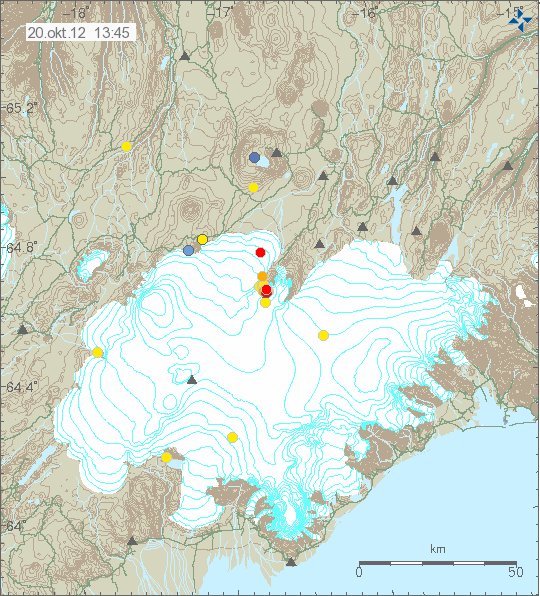
Earthquake activity in Kverkfjöll volcano. Copyright of this image belongs to Icelandic Meteorological Office.
Tjörnes Fracture Zone
At 02:07 UTC earthquake activity did start in TFZ. Just off the coast of Iceland. This earthquake activity is taking place in area that last had earthquake swarm in September. I did cover that earthquake activity in details on this blog. So far the largest earthquakes in this area of TFZ have had the magnitude of ML2.9. This is purely tectonic earthquake activity.
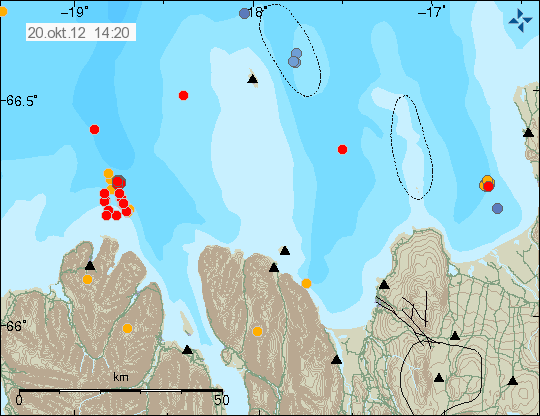
Earthquake activity in TFZ. Copyright of this image belongs to Icelandic Meteorological Office.
It is difficult to know what happens next in TFZ earthquake activity. But it likely going to continue for the next few hours to days like earlier. It is best to keep an eye on this earthquake activity. This earthquake activity also sometimes stops for few hours before it continues again. Most of this earthquake activity can be seen on my geophone network web page.
If anything major happens in this earthquake activity. I am going to post new blog post with updated information on that activity.
